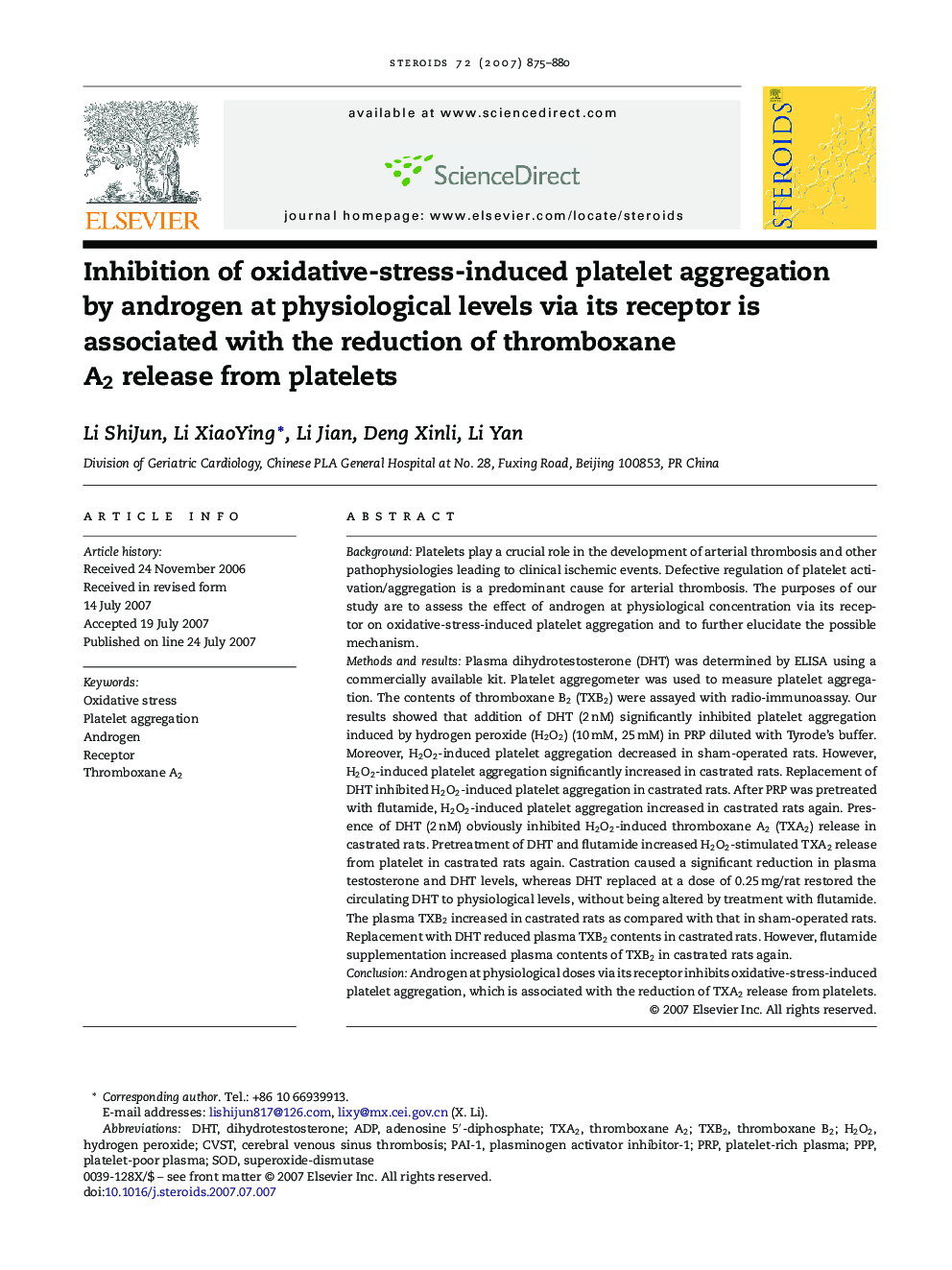| کد مقاله | کد نشریه | سال انتشار | مقاله انگلیسی | نسخه تمام متن |
|---|---|---|---|---|
| 2029067 | 1070470 | 2007 | 6 صفحه PDF | دانلود رایگان |

BackgroundPlatelets play a crucial role in the development of arterial thrombosis and other pathophysiologies leading to clinical ischemic events. Defective regulation of platelet activation/aggregation is a predominant cause for arterial thrombosis. The purposes of our study are to assess the effect of androgen at physiological concentration via its receptor on oxidative-stress-induced platelet aggregation and to further elucidate the possible mechanism.Methods and resultsPlasma dihydrotestosterone (DHT) was determined by ELISA using a commercially available kit. Platelet aggregometer was used to measure platelet aggregation. The contents of thromboxane B2 (TXB2) were assayed with radio-immunoassay. Our results showed that addition of DHT (2 nM) significantly inhibited platelet aggregation induced by hydrogen peroxide (H2O2) (10 mM, 25 mM) in PRP diluted with Tyrode's buffer. Moreover, H2O2-induced platelet aggregation decreased in sham-operated rats. However, H2O2-induced platelet aggregation significantly increased in castrated rats. Replacement of DHT inhibited H2O2-induced platelet aggregation in castrated rats. After PRP was pretreated with flutamide, H2O2-induced platelet aggregation increased in castrated rats again. Presence of DHT (2 nM) obviously inhibited H2O2-induced thromboxane A2 (TXA2) release in castrated rats. Pretreatment of DHT and flutamide increased H2O2-stimulated TXA2 release from platelet in castrated rats again. Castration caused a significant reduction in plasma testosterone and DHT levels, whereas DHT replaced at a dose of 0.25 mg/rat restored the circulating DHT to physiological levels, without being altered by treatment with flutamide. The plasma TXB2 increased in castrated rats as compared with that in sham-operated rats. Replacement with DHT reduced plasma TXB2 contents in castrated rats. However, flutamide supplementation increased plasma contents of TXB2 in castrated rats again.ConclusionAndrogen at physiological doses via its receptor inhibits oxidative-stress-induced platelet aggregation, which is associated with the reduction of TXA2 release from platelets.
Journal: Steroids - Volume 72, Issue 13, November 2007, Pages 875–880